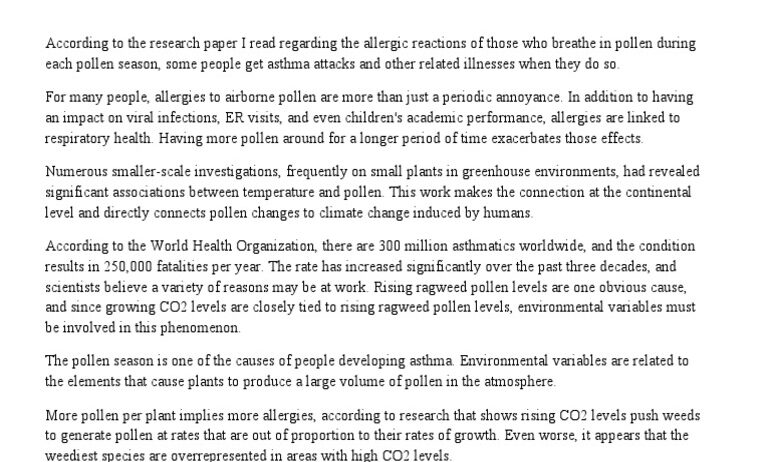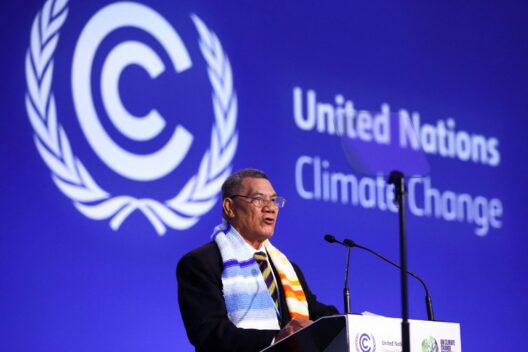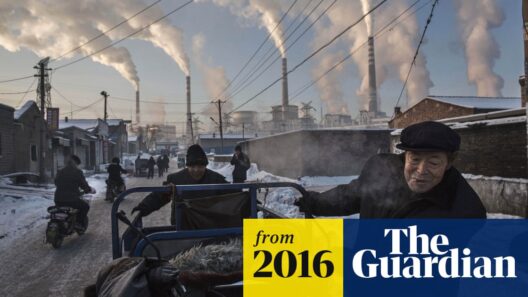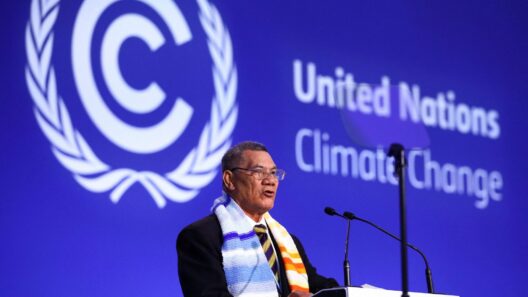As the planet continues to warm, the repercussions of climate change are reverberating through various aspects of human health. One alarming consequence that has garnered significant attention is the escalating prevalence of allergies and related illnesses. But have you ever stopped to wonder why your seasonal allergies seem to be worsening? Could there be a connection to the subtle yet pervasive changes in our climate? The answer is a resounding yes; global warming poses a considerable public health threat, exacerbating allergies and ushering in a multitude of other health challenges.
To comprehend the intricate relationship between climate change and health, it is vital to understand how global warming affects environmental conditions. Rising temperatures foster an ideal environment for a variety of allergens such as pollen and mold. Studies indicate that as temperatures increase, the length of the growing season for plants also extends, resulting in heightened pollen production and prolonged allergy seasons. This shift can dramatically affect individuals with respiratory ailments, creating a pervasive health challenge that can lead to more severe conditions.
Moreover, increased carbon dioxide levels act as a fertilizer for many allergenic plants. For instance, ragweed, one of the most common culprits of hay fever, emits as much as 10 times more pollen in an enriched carbon dioxide environment. The consequence is not merely an inconvenience for those who suffer from allergies; it translates into substantial public health implications. Asthma rates are on the rise, particularly in urban environments where pollution and allergens converge, creating a toxic cocktail for vulnerable populations.
As we delve deeper into the public health implications of global warming, it becomes evident that allergies are merely the tip of the iceberg. The proliferation of pests such as ticks and mosquitoes also constitutes a significant threat to human health, as these vectors are vital for transmitting diseases like Lyme disease and West Nile virus. Warmer climates have allowed these pests to expand their habitats, facilitating the spread of infectious diseases. This issue raises an essential question: how can communities prepare to combat the health threats posed by these shifting ecosystems?
Adaptation strategies are paramount in addressing these public health challenges. Communities could invest in educational campaigns to inform the public about the dangers associated with climate-induced health risks. Promoting awareness around recognizing symptoms of allergies and diseases transmitted by pests is a preliminary step in equipping citizens with the knowledge necessary to protect their health. Furthermore, initiatives aimed at reducing local air pollution can concurrently alleviate asthma symptoms, presenting a dual benefit for public health.
Urban planning and green infrastructure also emerge as critical components of an effective public health strategy. Urban areas plagued by high levels of pollution can be revitalized by creating green spaces and enhancing tree canopies. These natural amenities can help mitigate air pollution, absorbing toxins while simultaneously reducing allergenic pollen through careful selection of plant species. Conclusively, investing in nature can provide substantial returns in terms of public health.
Climate change not only heightens the risk of allergies and infectious diseases but also exacerbates mental health challenges. Extreme weather events such as hurricanes, droughts, and wildfires can lead to traumatic experiences, fostering conditions such as anxiety, depression, and post-traumatic stress disorder (PTSD). As communities grapple with the aftermath of these events, the emotional and psychological toll can be considerable, thereby compounding the existing public health crisis.
In light of these concerns, it is essential for policymakers to implement comprehensive strategies that transcend immediate responses. A forward-thinking approach could involve integrating public health considerations into climate action plans. By prioritizing health outcomes alongside environmental sustainability, communities can cultivate resilience against the multifaceted threats posed by global warming.
Ultimately, addressing the public health implications of climate change necessitates the cooperation of diverse stakeholders. This includes local governments, healthcare providers, environmental organizations, and the community at large. Collaborative efforts can foster an environment where innovative solutions are cultivated, and effective action is taken to mitigate health risks. The challenge lies in galvanizing public support for initiatives designed to address these interconnected issues.
As the global climate continues to shift, we must be proactive rather than reactive. Understanding the intricate relationship between climate change and public health is the first step in a long journey toward a healthier future. From becoming more mindful about our personal contributions to climate issues to advocating for systemic changes, every action counts. The choice is clear; embracing a climate-conscious lifestyle not only benefits the planet but also protects our health and well-being.
In conclusion, the nexus of allergies, illness, and global warming presents a formidable public health challenge. As we navigate this complex terrain, it is imperative that we recognize the symptoms of this larger issue and actively seek solutions. The stakes are high, but with coordinated action, it is possible to forge a path that ensures both environmental sustainability and public health safety.







